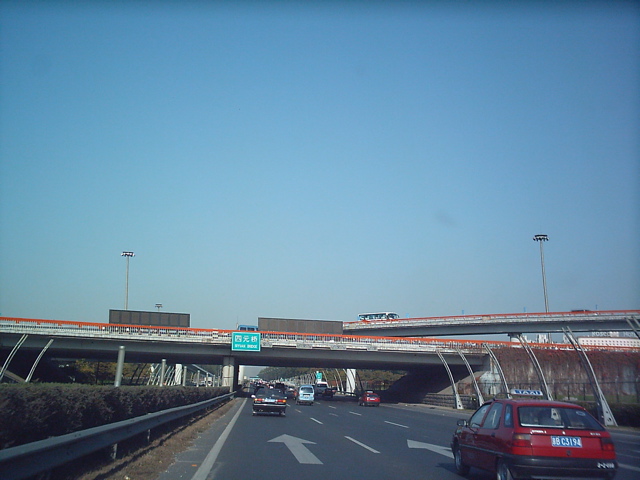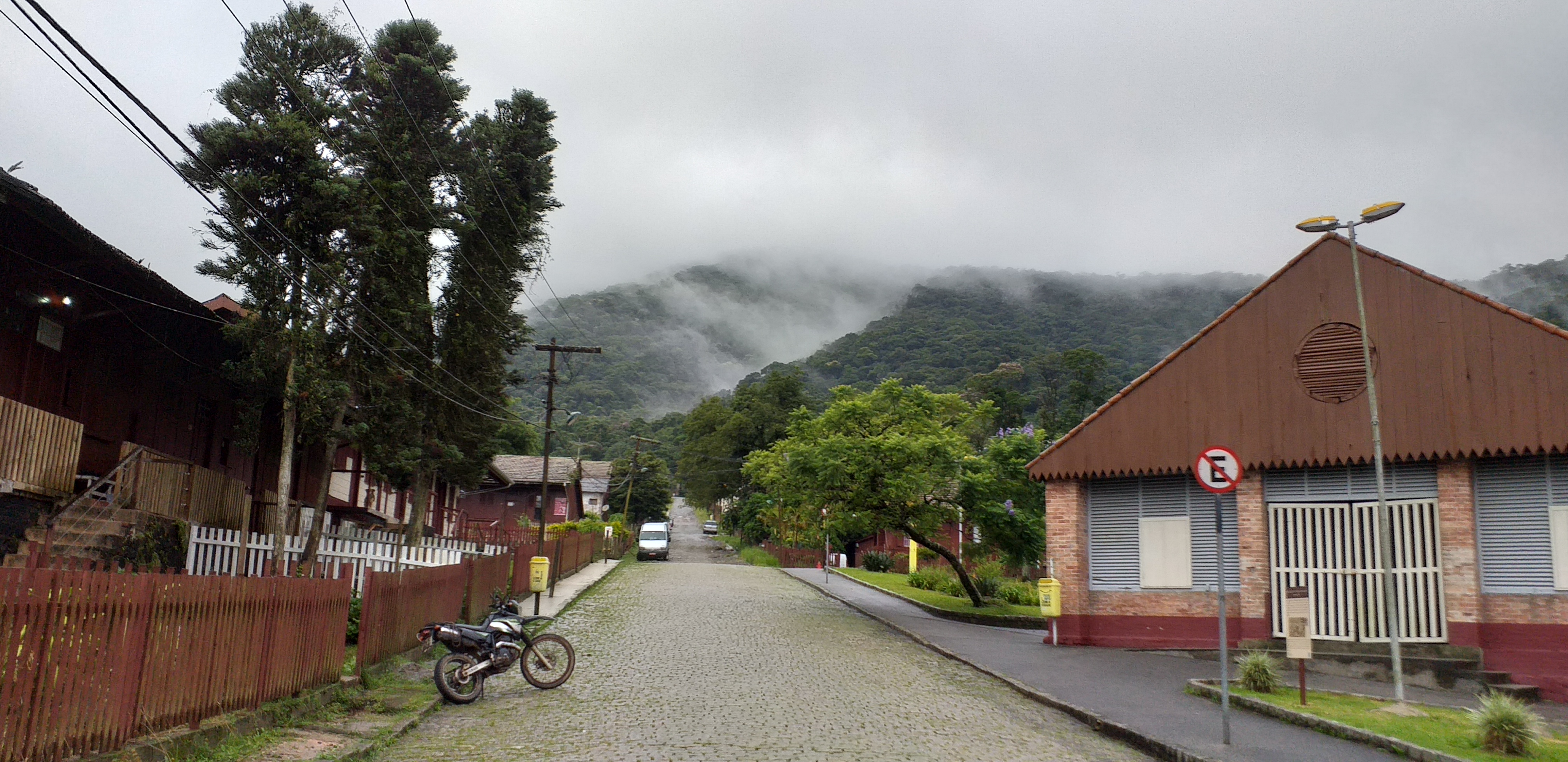|
Northern Airport Line
The Northern Airport Expressway, officially numbered S28, is an 11.29 km toll road extension that runs from G45 Daqing–Guangzhou Expressway (formerly Beijing- Chengde Expressway) to the Beijing Capital International Airport in Beijing, China. It was opened in September 2006.(Chinese京承高速二期 机场北线高速全线通车/图 京华时报Sept. 29, 2006 The opening of this road has helped to alleviate traffic on the Airport Expressway, which had been the sole highway link to the airport. The Northern Airport Line allows drivers from Zhongguancun and points north and west of the city to head north first on Jingcheng Expressway before going directly east to the airport, instead of having to go east on the 4th Ring Road to get on the Airport Expressway, where traffic is often clogged near the Siyuan Bridge Siyuan Bridge () is a large, complex overpass in northeastern Beijing, China. Similar to Wuyuan Bridge further north and Sanyuan Bridge further south, it lin ... [...More Info...] [...Related Items...] OR: [Wikipedia] [Google] [Baidu] |
Beijing Capital International Airport
Beijing Capital International Airport is one of two international airports serving Beijing, the other one being Beijing Daxing International Airport (PKX). It is located northeast of Beijing's city center, in an exclave of Chaoyang District and the surroundings of that exclave in suburban Shunyi District. The airport is owned and operated by the Beijing Capital International Airport Company Limited, a state-controlled company. The airport's IATA Airport code, PEK, is based on the city's former romanized name, Peking. Beijing Capital has rapidly ascended in rankings of the world's busiest airports in the past decade. It had become the busiest airport in Asia in terms of passenger traffic and total traffic movements by 2009. It was the world's second busiest airport in terms of passenger traffic between 2010 and 2021. The airport registered 557,167 aircraft movements (takeoffs and landings), ranking 6th in the world in 2012. In terms of cargo traffic, Beijing airport has ... [...More Info...] [...Related Items...] OR: [Wikipedia] [Google] [Baidu] |
G45 Daqing–Guangzhou Expressway
The Daqing–Guangzhou Expressway (), designated as G45 and commonly referred to as the Daguang Expressway () is an expressway that connects the cities of Daqing, Heilongjiang, and Guangzhou, Guangdong. When fully complete, it will be in length. Route Once complete the Daqing–Guangzhou Expressway will run from Daqing, Heilongjiang to Guangzhou, Guangdong. It passes through the following major cities; * Daqing, Heilongjiang * Songyuan, Jilin * Shuangliao, Jilin * Tongliao, Inner Mongolia * Chifeng, Inner Mongolia * Chengde, Hebei * Beijing * Bazhou, Hebei * Hengshui, Hebei * Puyang, Henan * Kaifeng, Henan * Zhoukou, Henan * Huanggang, Hubei * Huangshi, Hubei * Xinyu, Jiangxi * Ji'an, Jiangxi * Ganzhou, Jiangxi * Guangzhou, Guangdong History The first section of the expressway opened in the north of Beijing in 2002. Northeast of Beijing the 210 kilometre section to Chengde was known as the ''Jingcheng expressway''( Chinese: 京承高速公路; pinyin: Jīngchéng ... [...More Info...] [...Related Items...] OR: [Wikipedia] [Google] [Baidu] |
Chengde
Chengde, formerly known as Jehol and Rehe, is a prefecture-level city in Hebei province, situated about 225 km northeast of Beijing. It is best known as the site of the Mountain Resort, a vast imperial garden and palace formerly used by the Qing emperors as summer residence. The permanent resident population is approximately 3,473,200 in 2017. History In 1703, Chengde was chosen by the Kangxi Emperor as the location for his summer residence. Constructed throughout the eighteenth century, the Mountain Resort was used by both the Yongzheng and Qianlong emperors. The site is currently an UNESCO World Heritage Site. Since the seat of government followed the emperor, Chengde was a political center of the Chinese empire during these times. The city of Jeholan early romanization of Rehe via the French transcription of the northern suffix ''ér'' as ''eul''reached its height under the Qianlong Emperor 1735-1796 (died 1799). The great Putuo Zongcheng Temple, loosely based on the ... [...More Info...] [...Related Items...] OR: [Wikipedia] [Google] [Baidu] |
Beijing
} Beijing ( ; ; ), alternatively romanized as Peking ( ), is the capital of the People's Republic of China. It is the center of power and development of the country. Beijing is the world's most populous national capital city, with over 21 million residents. It has an administrative area of , the third in the country after Guangzhou and Shanghai. It is located in Northern China, and is governed as a municipality under the direct administration of the State Council with 16 urban, suburban, and rural districts.Figures based on 2006 statistics published in 2007 National Statistical Yearbook of China and available online at archive. Retrieved 21 April 2009. Beijing is mostly surrounded by Hebei Province with the exception of neighboring Tianjin to the southeast; together, the three divisions form the Jingjinji megalopolis and the national capital region of China. Beijing is a global city and one of the world's leading centres for culture, diplomacy, politics, financ ... [...More Info...] [...Related Items...] OR: [Wikipedia] [Google] [Baidu] |
China
China, officially the People's Republic of China (PRC), is a country in East Asia. It is the world's List of countries and dependencies by population, most populous country, with a Population of China, population exceeding 1.4 billion, slightly ahead of India. China spans the equivalent of five time zones and Borders of China, borders fourteen countries by land, the List of countries and territories by land borders, most of any country in the world, tied with Russia. Covering an area of approximately , it is the world's third List of countries and dependencies by area, largest country by total land area. The country consists of 22 provinces of China, provinces, five autonomous regions of China, autonomous regions, four direct-administered municipalities of China, municipalities, and two special administrative regions of China, Special Administrative Regions (Hong Kong and Macau). The national capital is Beijing, and the List of cities in China by population, most populous cit ... [...More Info...] [...Related Items...] OR: [Wikipedia] [Google] [Baidu] |
Airport Expressway (Beijing)
The Airport Expressway (), officially the S12, is a controlled-access highway in Beijing, China, which links central Beijing to the Beijing Capital International Airport. It is just under 20 km in length. Opened in 1993, the expressway links Sanyuanqiao on the northeastern 3rd Ring Road to Beijing Airport. Another expressway, the 2nd Airport Expressway, was built in 2008 prior to the Beijing Olympics to serve traffic from the city to the airport. Route The Airport Expressway runs entirely within the confines of the municipality of Beijing. Basic Route: Beijing ( Sanyuanqiao - Siyuan - Beigao - Xiaotianzu - Beijing Capital International Airport) Status: The entire expressway is complete. History The expressway opened on September 14, 1993, following a year-long construction effort which began on July 2, 1992. Previously, all traffic used the old Airport Road, which was tested to the limit in the early 1990s. This expressway has slashed driving time to the a ... [...More Info...] [...Related Items...] OR: [Wikipedia] [Google] [Baidu] |
Zhongguancun
Zhongguancun () is a major technology hub in Haidian District, Beijing, China. Zhongguancun occupies a band between the northwestern Third Ring Road and the northwestern Fourth Ring Road, in the northwestern part of Beijing. Zhongguancun is sometimes known as " China's Silicon Valley". The place is also the center of Beijing-Tianjin-Shijiazhuang Hi-Tech Industrial Belt. History Chen Chunxian envisioned Zhongguancun, which then became a well-known technology hub 30 years later. Chunxian, a member of the Chinese Academy of Sciences (CAS), conceived of a Silicon Valley in China following a government-sponsored trip to Boston and Silicon Valley, United States. Zhongguancun became known as "Electronics Avenue" () from the early 1980s on, due to its information technology markets along a central, crowded street. Zhongguancun was recognized by the central government of China in 1988, and officially named "Beijing High-Technology Industry Development Experimental Zone". In 199 ... [...More Info...] [...Related Items...] OR: [Wikipedia] [Google] [Baidu] |
4th Ring Road
The 4th Ring Road () is a controlled-access expressway ring road in Beijing, China which runs around the city, with a radius of approximately from city centre. The total length of the road is . There are 147 bridges and viaducts that run the length of the Ring Road. The first section, the northern corridor, was completed in preparation for the 1990 Asian Games. The Ring Road was 'enclosed' in a full circle in June 2001, with standard controlled-access expressway throughout. Route The 4th Ring Road runs within the confines of the city of Beijing, more like a rectangle than a circle. The route travels past: Siyuan Bridge - Chaoyang Park Area - Sihui - Sifang Bridge - Shibalidian - Dahongmen - Majialou - Yuegezhuang Bridge - Fengtai Area - Sijiqing Area - Zhongguancun Area - Jianxiang - Asian Games Village Area - Wanghe Bridge - Siyuan Bridge The entire express road is complete and open to traffic. History Already in the early 1990s, the northern stretch of the ... [...More Info...] [...Related Items...] OR: [Wikipedia] [Google] [Baidu] |
Siyuan Bridge
Siyuan Bridge () is a large, complex overpass in northeastern Beijing, China. Similar to Wuyuan Bridge further north and Sanyuan Bridge further south, it links three roads instead of just two for a normal overpass. The Airport Expressway, China National Highway 101, and the 4th Ring Road are linked. Siyuan Bridge is extremely complex. Approaching east (coming in from the west), one faces two exits within a few metres of each other, and the second exit splits into two on the bridge. Half a kilometre away lies yet another exit. The exits for the portion coming in from the east are even more complex (three separate exits), and there is no entrance into the Airport Expressway heading south. Odder still, drivers heading for Beijing Capital International Airport can only enter the 4th Ring Road The 4th Ring Road () is a controlled-access expressway ring road in Beijing, China which runs around the city, with a radius of approximately from city centre. The total length of the ro ... [...More Info...] [...Related Items...] OR: [Wikipedia] [Google] [Baidu] |
Road Transport In Beijing
A road is a linear way for the conveyance of traffic that mostly has an improved surface for use by vehicles (motorized and non-motorized) and pedestrians. Unlike streets, the main function of roads is transportation. There are many types of roads, including parkways, avenues, controlled-access highways (freeways, motorways, and expressways), tollways, interstates, highways, thoroughfares, and local roads. The primary features of roads include lanes, sidewalks (pavement), roadways (carriageways), medians, shoulders, verges, bike paths (cycle paths), and shared-use paths. Definitions Historically many roads were simply recognizable routes without any formal construction or some maintenance. The Organization for Economic Co-operation and Development (OECD) defines a road as "a line of communication (travelled way) using a stabilized base other than rails or air strips open to public traffic, primarily for the use of road motor vehicles running on their own wheels" ... [...More Info...] [...Related Items...] OR: [Wikipedia] [Google] [Baidu] |





.jpg)


